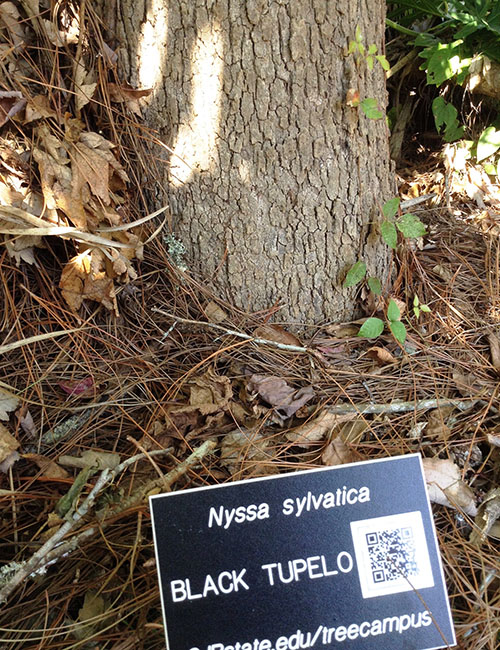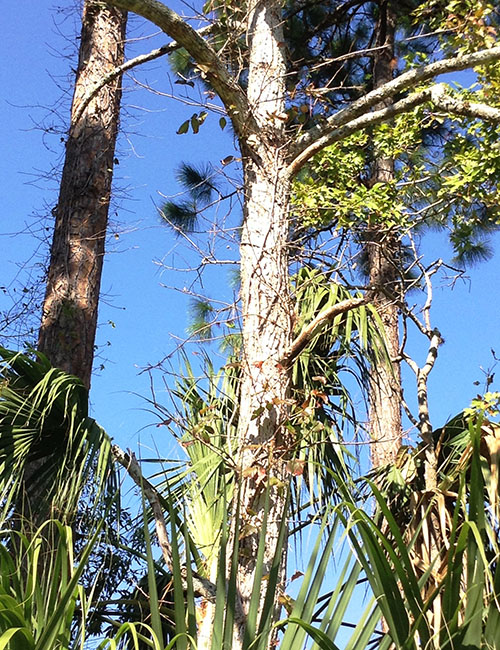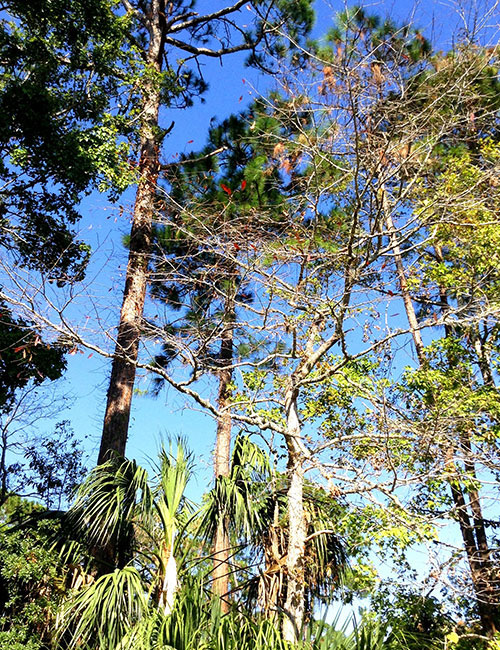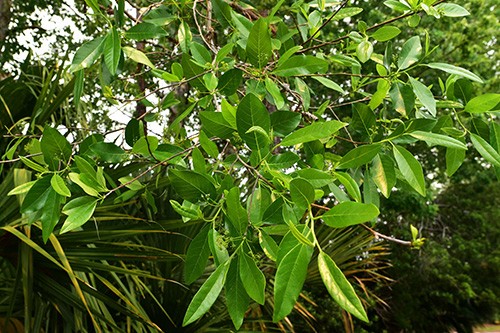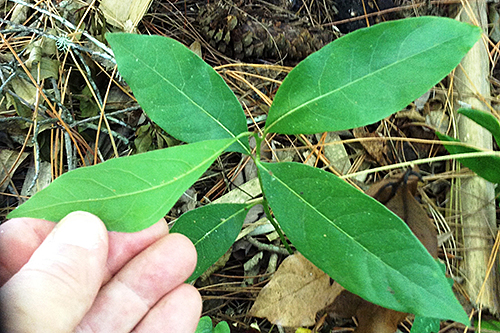Black Tupelo
Nyssa sylvatica
Two varieties of the Black Tupelo are usually recognized: var. sylvatica, the Sour Gum, a tree of well-drained, upland sites; and var. biflora, the Black Gum, mostly in seasonally or permanently flooded habitats. They are found throughout the northern and central parts of the state. In addition, a close relative, the Water Tupelo (Nyssa aquatica), grows in shallow ponds and on the edges of swamps.
The leaves are simple, alternate, two to four inches long, entire or rarely with a few coarse teeth, often broadest near the apex, shiny, and dark green. In cool climates, the leaves turn brilliant red in the fall.
Bark on younger trees is furrowed between flat ridges and gradually develops into quadrangular blocks that are dense, hard, and gray or black.
Inconspicuous greenish flowers are borne on long slender stems in early spring. The flowers are of two kinds, on separate trees; males in few-flowered racemes and bisexual ones in two to several-flowered, long-stalked clusters. The fruit is a drupe with dark blue flesh, about two-thirds of an inch long containing a single hard seed. Two or three fruits are borne in a long-stalked cluster.
The wood is very tough, cross-grained, and not durable in contact with the soil. It has been used for veneers, mallets, rough floors, pulpwood, and fuel. In the old days, the hollow trunks were used as hives for bees that were called "bee gums."
Visit our Tree Campus homepage for more information.
Tree information provided with permission of the Florida Department of Agriculture and Consumer Services for more information visit https://www.fdacs.gov/.

